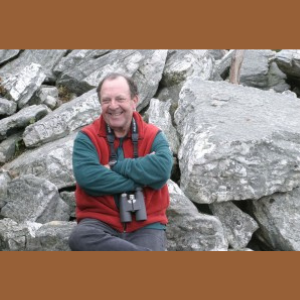
Peter Hausmann is passionate about ensuring that future generations have the opportunity to be inspired by nature – not, as he likes to say, “by viewing it on the National Geographic channel, but by experiencing it firsthand.” In fact, his passion is such that he has dedicated much of his adult life applying his tenacity, tireless energy, and the considerable business acumen gained during a career in commercial real estate to build strong land trusts, save countless special places, and help lay the foundation for a thriving conservation movement here in Pennsylvania and across the country.
Peter was a founding Trustee of the Willistown Conservation Trust (Chester County, PA) and of a non-profit organization that leveraged his real estate expertise to purchase and resell over $80 million of land to conservation buyers in the Willistown area. Peter was also at the forefront of Chester County’s nationally-recognized open space preservation efforts beginning in the late 1980’s. In 1989, he helped to found and chaired Save Open Space, a citizens’ group that successfully shepherded the county’s pioneering open space bond issue. He then helped to establish the open space program that became the model for other county initiatives around the region. In 1990, President George H. W. Bush awarded Peter the Theodore Roosevelt Conservation Award in recognition of his work on the county program.
The most lasting legacy of his work in Chester County may have been his vision for linking open space with economic development. In a 1999 article, the Philadelphia Inquirer wrote of Peter’s service to the County: “By most accounts, Hausmann’s vision of linking open space and economic development has transformed the way politicians, businesses and environmentalists view the issue of growth management not only in Chester County, but in the region.” That link helped officials and voters see conservation as not merely an environmental concern, but an economic necessity.
Peter’s contributions to land conservation extend beyond his own Chester County backyard to the Philadelphia region and all of Pennsylvania. He is a former board member and real estate committee chair for The Nature Conservancy’s Pennsylvania Chapter and former board member of the Pennsylvania Environmental Council, the Green Space Alliance, and 10,000 Friends of Pennsylvania.
In June 2013, Peter will step down as Chairman of the Natural Lands Trust Board of Trustees, a position he has held for 13 years. During his tenure as Chair, Natural Lands Trust embraced a more proactive approach to conservation that resulted in the permanent protection of over 35,000 acres – the single most productive time in the organization’s 60-year history. (In some cases, the self-confessed ‘deal junkie’ negotiated complex acquisitions and easements himself.) He also inspired a re-evaluation of the role the organization’s 42 nature preserves could play in connecting people to nature and fostering future generations of conservationists. As a result, many of those preserves are now much more accessible to the public and are home to an active volunteer corps.
Ever concerned about the long-term sustainability of the land trust movement, Peter lent his talents to the Land Trust Alliance from 2007 to 2009, where, as Chairman, he oversaw the launch of the Alliance’s ground-breaking accreditation process and was a leading advocate for the development of the Terrafirma Risk Retention Group – a charitable risk pool designed to insure member land trusts against the legal costs of defending conservation agreements.
It is certainly true that Peter Hausmann has given a lifetime of leadership to conservation in Pennsylvania and beyond, but it is premature to speak of his work in the past tense. He may be spending a bit more time with his wife Alice – herself a committed conservation leader – but he continues to be a passionate advocate (inspired now, more than ever, by his three grandchildren) for the vision he has worked tirelessly to fulfill.
Peter Hausmann is passionate about ensuring that future generations have the opportunity to be inspired by nature – not, as he likes to say, “by viewing it on the National Geographic channel, but by experiencing it firsthand.”




